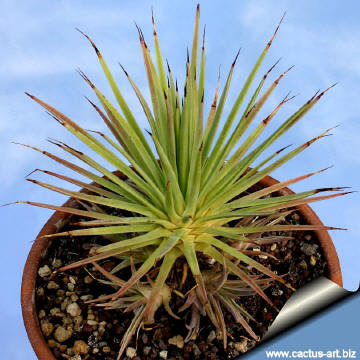-
x
Description
This is a beautiful dwarf plant, whose leaves are quite stiff and ...delightfully painful. It is particularly suited for pot culture because its maximum size is less than 25 cm. Family: Agavaceae Scientific name: Agave striata Zucc. Origin: Mexico (coahuilia, Nuevo Leon, Tamaulipas, Durango, Zacatecas, San Luis Potosi, Queretaro, puebla) Habitat: It is limited to drier valleys and plains, with rainfall /year less than 500 mm. Ecology: It is one of the few non-monocarpic agaves. The initial rosettes, after the flower stalks finish blooming in mid-summer, branch and continue to grow, eventually creating a stack of porcupine-like balls. Conservation status: Listed in CITES appendix 2. Common Names include: Needle agave
| |
| Description: Agave striate is a dense, suckering rosette succulent with unique spiny pencil-like foliage, with nice spherical growth that branch profusely from the base. Older clumps can be to 2-3 m broad. Due to the wide area of distribution, this species shows many different forms, particularly for general habit and leaf form, and to a lesser extent in flower structure. It very similar to Agave stricta, and can be easily confused with a yucca. | |
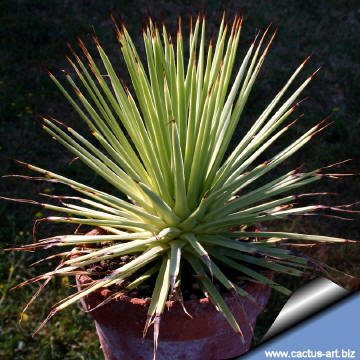 | 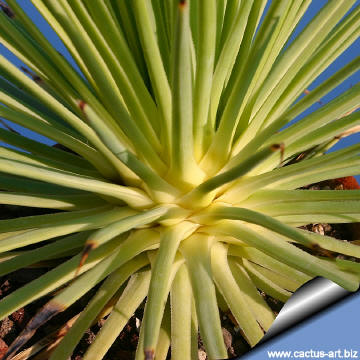 |
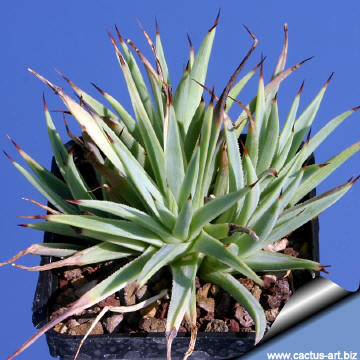 | |
| Cultivation: A. striata nana is a versatile and very hardy plant that can be grown in half-shade to full-sun. It can take moderate to severe freezes, and is extremely drought tolerant. It tends to be more slow-growing than the standard species plant, hence the price. In winter watering this plant can be done once every 1-2 months, there is no need to mist the leaves. Agave striata is theoretically hardy to -3° C. Particularly when dry but it is best to avoid severe freezing temperatures. Heat Tolerance: Excellent. Propagation: Relatively easy to propagate by by suckers (if available) Remove the basal suckers in spring or summer and let the cuttings dry for a few days before inserting in compost. | |

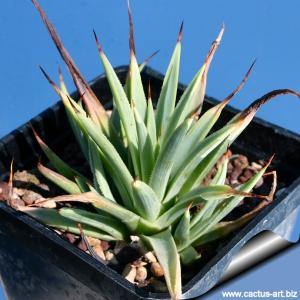
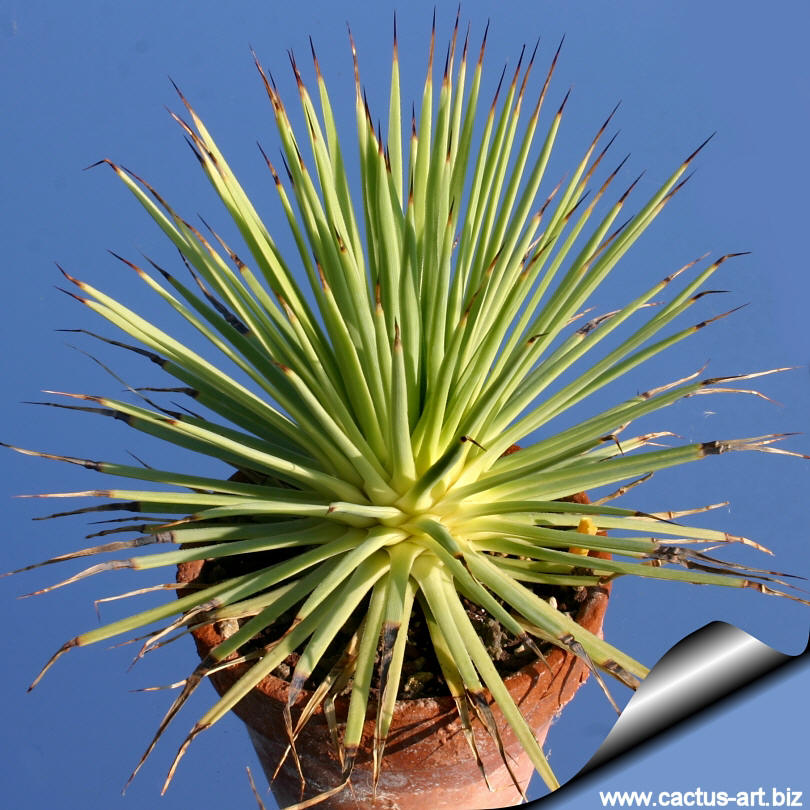 Agave striata "minima" (= nana)
Agave striata "minima" (= nana)